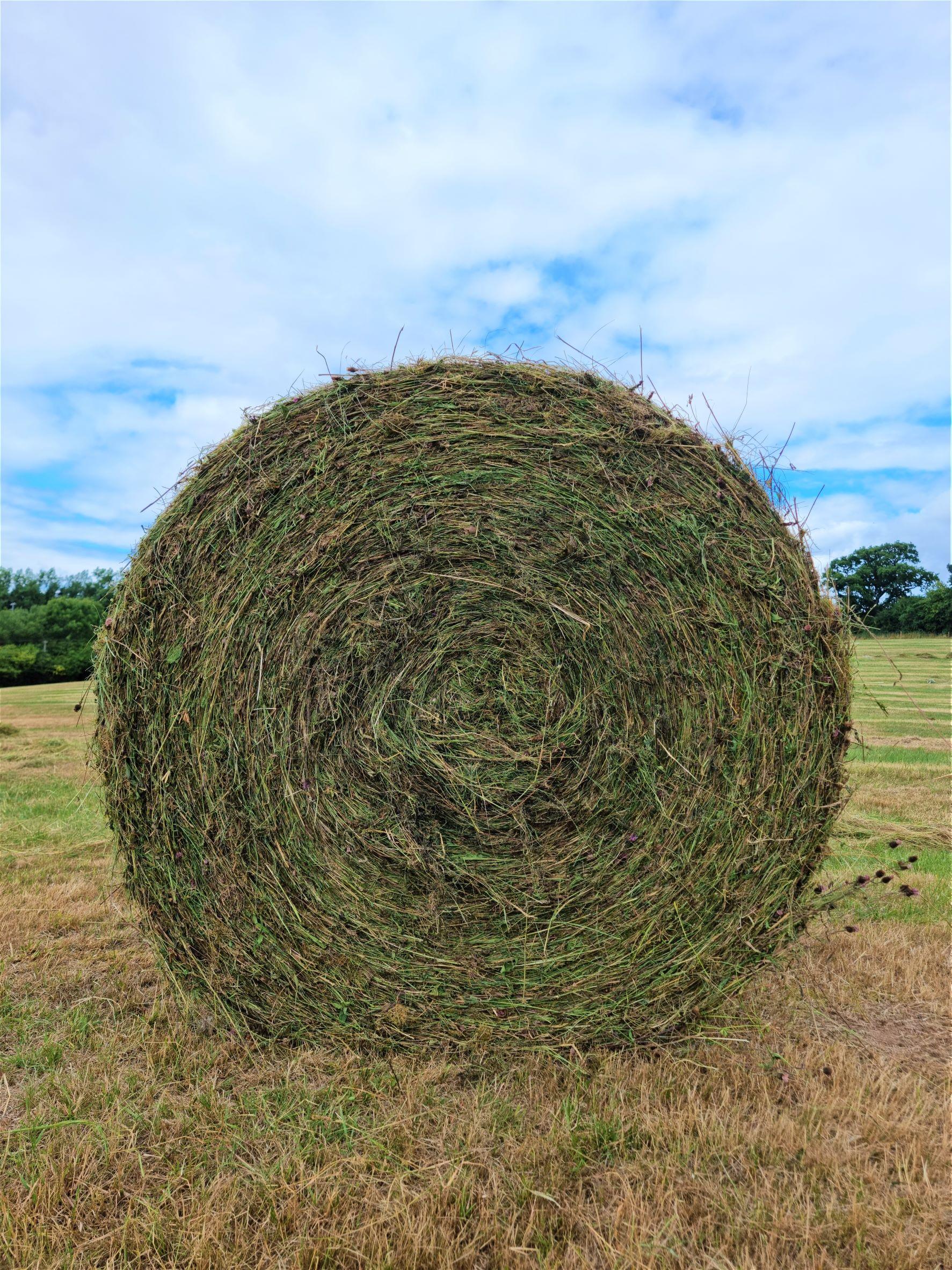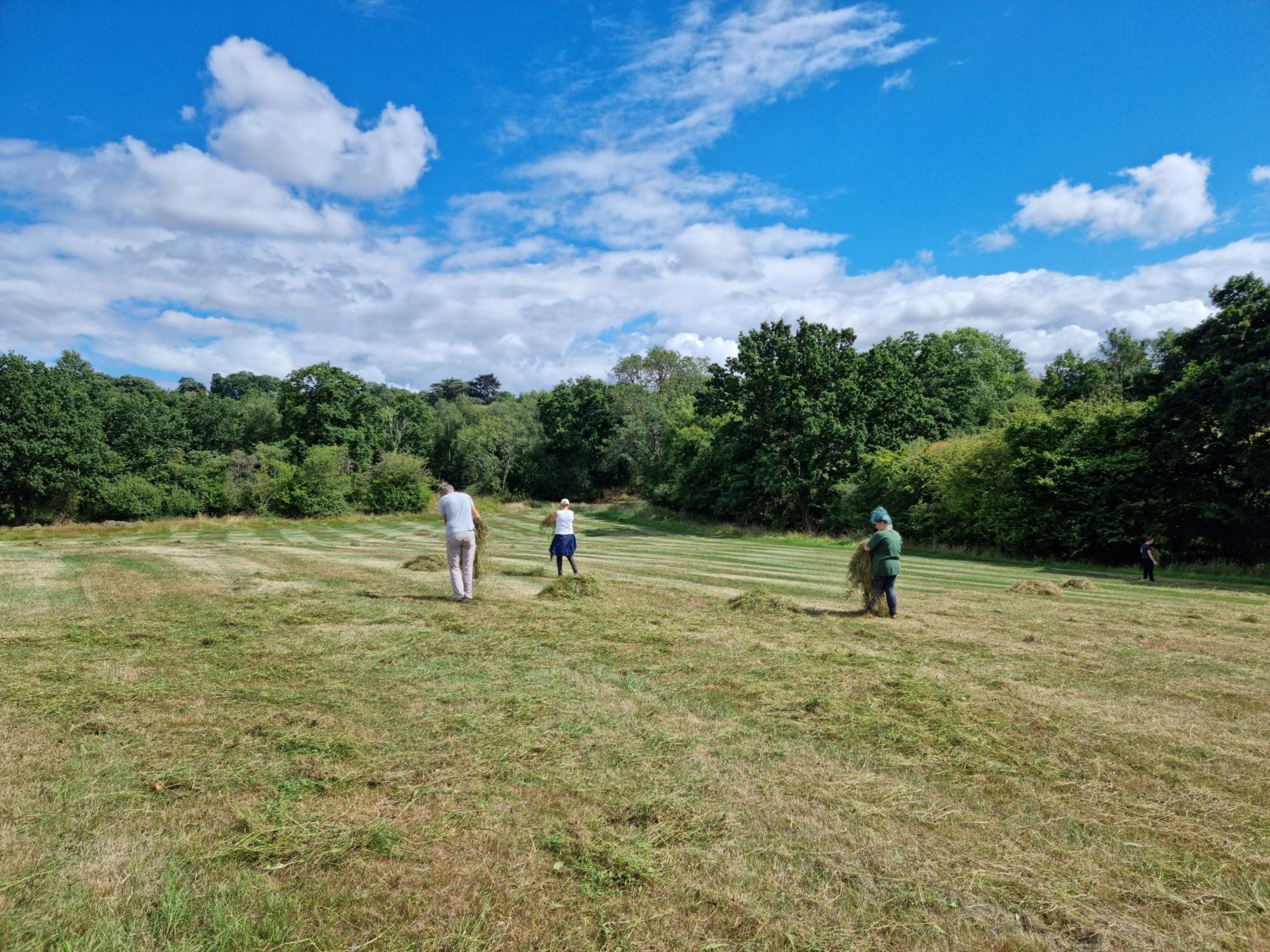Green hay and wildflower meadow generation
Creating the Heart of England Forest is not just about planting trees - it is about creating, growing and enhancing all types of habitats in and around our woodlands. One of our newer sites, Gorcott Hill, has a beautiful meadow that in the spring and summer is popping with vibrant colours. The bright yellows and purples of wildflowers can be seen rolling down the hills in waves. This magnificent meadow hosts life to an array of mammals, birds, reptiles, and insects, largely because of its rich plant life.
However, our two adjacent fields have much less plant biodiversity and therefore wildflowers are scarcely found. This summer, our biodiversity team put together a plan to use green hay and the seed from the rich native wildflower meadow to spread it onto the adjacent fields, with the aim to restore them to healthy, diverse meadows in the future.

What is green hay?
Green hay is formed from harvested wildflowers and grasses just before they drop seed and still look ‘green’. The idea is that the freshly cut hay is taken from a species-rich site, known as the donor site and is transported, and spread instantly on a recipient site that is low on plant species.
Why is it important?
Using green hay for grassland restoration and re-creation is a cost-effective method which has little negative environmental impact, with the result being a richer biodiverse landscape. Gorcott Hill is already host to a wide range of wildlife and plant life and we aim to continue the enhancement of this fantastic site. This summer our biodiversity team focused on restoring the meadows as part of the work made possible by a grant from Defra’s Green Recovery Challenge Fund.
How do we do it?
Green hay is cut and baled from the donor site and transported and spread on the recipient site. However, this requires careful planning. Biodiversity Officer, Tasha, outlines the process:
- Survey the donor field we to look at the species composition (as for example if the field was full of thistle it would not make a good donor site), that they are healthy and that there are no invasive species.
- Make sure the recipient site is close by and that the soil type is the same.
- Prepare the recipient site - this means cutting the grassland down short.
- Once the recipient has been mown, it is time to check the weather. This is vital as this is a timely process and transferring of the seed needs to be done immediately after the donor field has been cut. Weather conditions need to be dry with as little wind as possible, as we do not want to lose any of that precious seed in transit.
-
We then cut and bale the seeds on the donor site before the seeds drop, so the plants and seeds are still ‘green’.
-
Transport the green hay bale to the recipient site as quickly as possible, because cut grass can generate enough heat to kill the plant seed.
-
Start rolling out the hay bale! Once the bales have been rolled out on the recipient site, it is then time to start spreading - walk with it, rake it, throw it, as long as it is spread thinly and there are no piles of green hay remaining.
-
Finally, monitor the site.

We would like to say a big thank you to all the volunteers’ and members of the Forest team who got involved in this project to help restore our Gorcott Hill site.
If you want to know how you can get involved with exciting projects like this, then please register for our volunteer updates here – we would love to have you join us.




